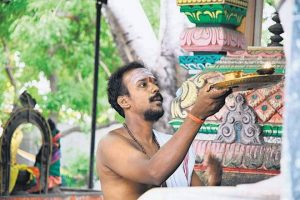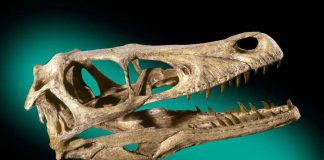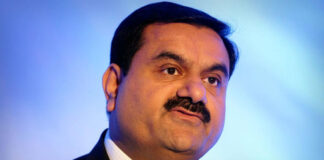AUGUST 4, 2018
 Ringing in change: T. Marichamy doing puja at the Ayyappan temple in Madurai.
Ringing in change: T. Marichamy doing puja at the Ayyappan temple in Madurai.
Marichamy, a first non-Brahmin to come out of a state-run archaka training centre, is a happy man.
It is 12 noon and the small Ayyappan temple in Tallakulam is closing. The bell tolls softly to signal the end of the annadhanam (free) lunch and people slowly walk out of the temple after eating a fulfilling meal. T. Marichamy, the temple priest, finishes off the last few archanais (personalised puja with chanting of the names of the deity, invoking the blessings).
He lights the lamp and offers some vibuthi (sacred ash) and kungumam (kumkum) to a family of four. Finally, he turns to the sanctum sanctorum where a statue of Lord Ayyappa is placed, and closes the wooden doors. After a puja-heavy six-hour shift, the priest catches his first break.
The scene could be from any of the thousands of temples that dot Tamil Nadu, but Mr. Marichamy is just not another priest: he is a non-Brahmin priest trained under the Tamil Nadu government’s archakas (priest) training centres between 2007 and 2008, wherein 206 people across castes were trained for priesthood in major Shaivite and Vaishnavite temples. After the first batch graduated, the programme was shut down.
Mr. Marichamy resurfaced 10 years later and created history by being the first among the 206 men to be appointed by the State’s Hindu Religious and Charitable Endowments (HR&CE) Department.
He is also the first person who does not belong to a lineage of traditional priests to be appointed in a temple to perform puja after undergoing formal training as an archaka.
Mr. Marichamy was born to a mason and a housewife in a small family in Madurai. The priest, who belongs to one of the three Mukkulathor communities (Agamudayar, Kallar and Maravar), says that he never imagined being clad in traditional temple clothes and being surrounded by temple paraphernalia.
Beyond dreams
“My family used to visit temples regularly when I was young. We spent days lounging in various temple corridors and volunteering during festivals. I was always interested in pujas but didn’t think that I could ever become a priest because nobody from my community had ever worked in a government temple,” he says.
After completing his Class 12 exams in 2000, Mr. Marichamy, in need of money, decided to work as a photographer in local studios. “I specialised in film processing, manual printing and black and white photography. But with the advent of digital photography, I was lost,” he says, recounting his bygone days.
In 2006, the HR&CE Department, under the DMK government headed by M. Karunanidhi, introduced the archaka training programme as part of reforms. The timing was perfect and Mr. Marichamy took the plunge. During his one year at the training centre in Madurai’s Meenakshi Sundareswarar temple, Mr. Marichamy learnt Panniru Tirumuraigal, a collection of Shaivite scriptures. “I learnt to do pujas and archanai and understood the special methodology to be followed during festival times. I was taught the basics of the Sanskrit language. We did not face any discrimination then. Even if we did, it was not direct,” he says.
After the completion of the course, Mr. Marichamy says he really struggled to get access to his certificate. “A job as a priest in a major temple was out of question due to the widespread opposition. I began working at a small private temple for 10 years,” he says. In February 2017, he says that he spotted an advertisement in a Tamil daily calling applications for the post of a priest in the Ayyappan temple in Tallakulam in Madurai. He applied, attended an interview and got the job on merit basis, he says. “It was a happy moment for my family and me,” he says. This father of three, who has been working since May, currently serves a two-year probation period and falls under the basic pay grade of ₹2,800. “It is difficult to manage, but the job is prestigious,” he says.
Mr. Marichamy says that he wishes he could single-handedly make a difference and change the system. “However, that is an impractical wish. Change is inevitable. I hope a day comes when they revive the archakar training for all and provide jobs for the already qualified priests from my batch. Until then, all we can do is wait,” he says and hurries off to eat his lunch.
A milestone
Lauding the appointment of Mr. Marichamy as an important milestone in the social justice movement pioneered by the Justice Party and the Dravidar Kazhagam, Dravida Iyakka Tamilar Peravai founder Suba. Veerapandian said that the wheel for the appointment of non-Brahmin priests in temples was set in motion by E.V. Ramasamy, fondly called as Periyar, in 1970.
“Periyar, who called the caste discrimination in temple priesthood as a thorn in his heart, threatened to stage a mass demonstration on the Republic Day in 1970 against this. It was in response to this that the then DMK government issued an order that enabled the appointment of people from all castes as priests,” he said, adding that the order, however, was made ineffectual by the Supreme Court in 1972.
However, some also point out that the first step that culminated in this appointment was the passing of The Madras Hindu Religious Endowment Act by the first Justice Party government in 1925 that brought many Hindu temples under the direct control of the State government.
Later, in 1982, the then Chief Minister M.G. Ramachandran appointed Justice Maharajan commission to identify reform measures to be taken in temple practices, which recommended that persons from all castes be appointed as archakas after they underwent proper training.
It was nearly 25 years later that the DMK government in 2006 issued a new order again to enable the appointment of non-Brahmin priests, which was also challenged in the Supreme Court. In its judgment in December 2015, the apex court, while refusing to strike down the order, said that the appointments must be in accordance with the agama that govern the worship at respective temples.
Pointing out that it was this judgment that enabled the Communist Party of India (Marxist)-led government in Kerala to appoint a Dalit as a priest in 2017, Mr. Veerapandian said that the seed for the progressive measure of Kerala government was sown in Tamil Nadu.
However, P.T.R.P. Thiagarajan, DMK MLA from Madurai Central constituency and grandson of P.T. Rajan, a founder of the Justice Party and the first one to head the HR&CE Board, expressed astonishment at the lack of interest of the present AIADMK-led government, which made the appointment, in touting it as an achievement. “It makes one doubtful whether the present government is really committed to Dravidian principles or if they fear repercussions from some sections,” he said.
Mr. Veerapandian said that the silence of Hindu right wing organisations on the appointment must also not be ignored since a section of them have floated movements to take away government’s control over temples.
Appreciating the AIADMK government for making the appointment, he stressed on the need for more such appointments, particularly from Dalit communities.
Courtesy/Source: The Hindu











































































































